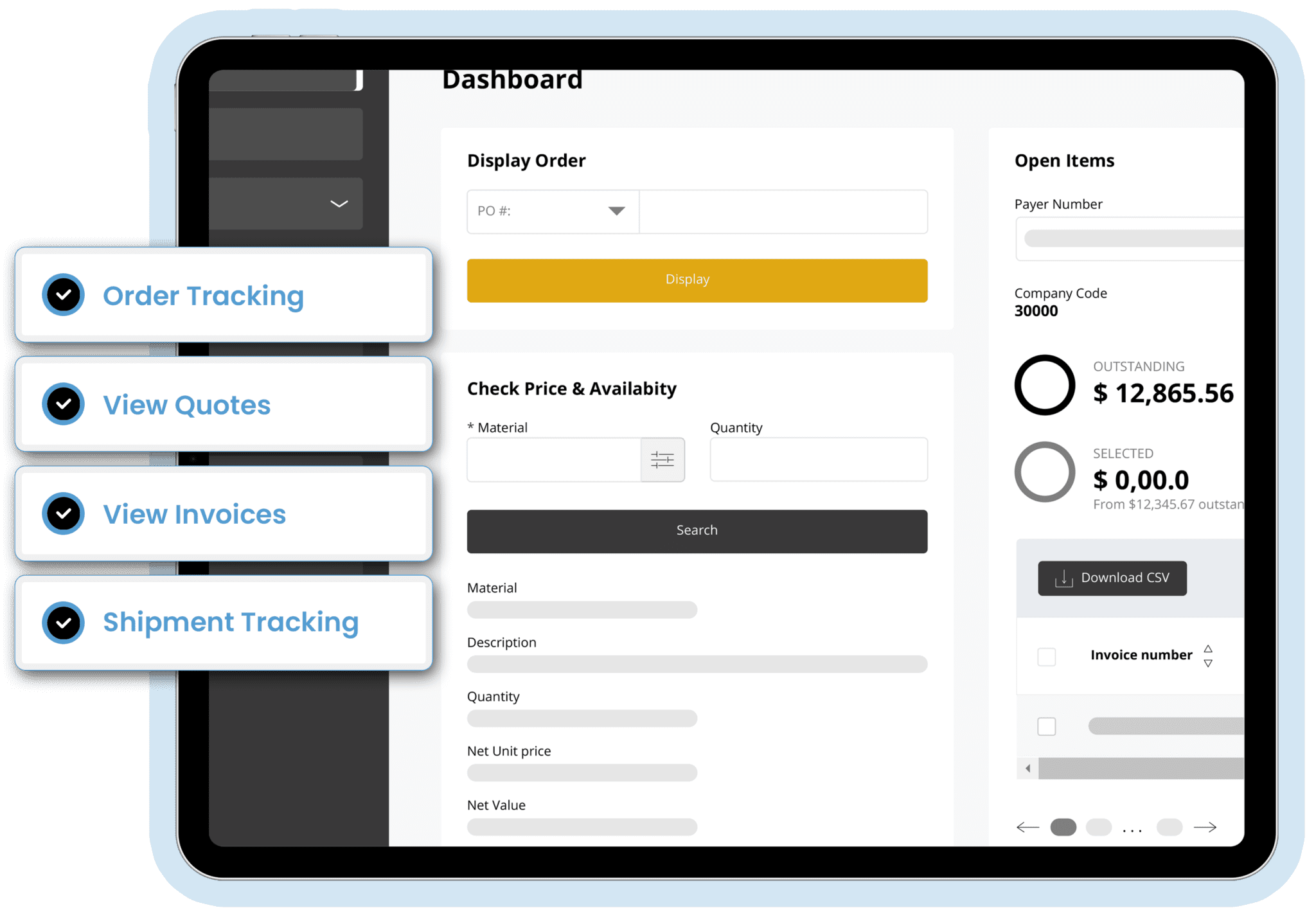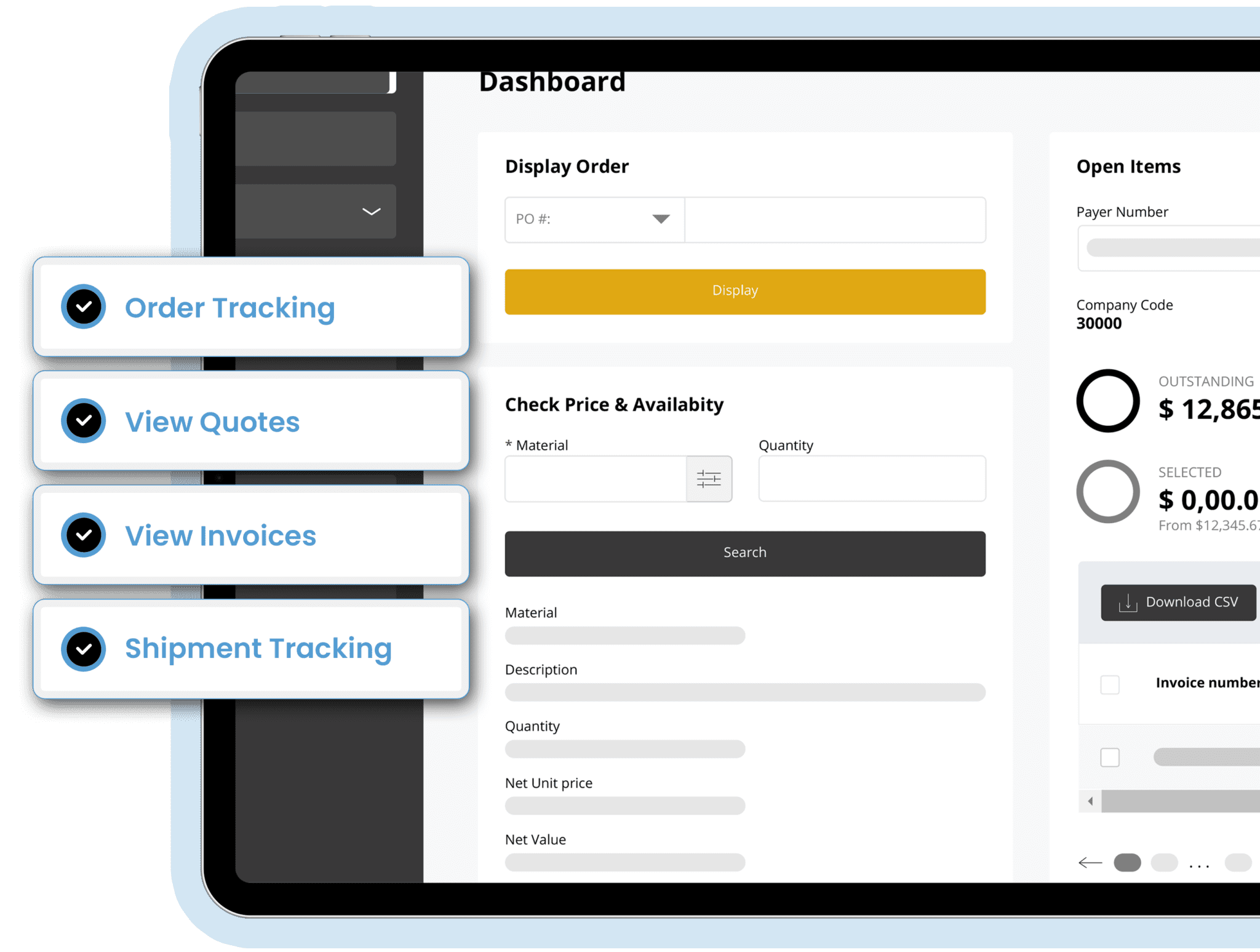Dealer & Distributor Portal
Empower Your Dealers & Distributors to Sell More
Grow revenue and market share with seamless digital experiences for your dealers and distributors. Give them intuitive browsing, purchasing, and order tracking with personalized data through SAP integration—all with fewer IT headaches and no technical debt.


Dealer & Distributor Portal
Empower Your Dealers & Distributors to Sell More
Grow revenue and market share with seamless digital experiences for your dealers and distributors. Corevist Commerce Cloud offers Intuitive browsing, purchasing, and order tracking with personalized data through SAP integration—all with fewer IT headaches and no technical debt.



Amaze your channel partners
Become the preferred supplier of your dealers and distributors. Today’s B2B buyers want intuitive experiences that borrow from Amazon—yet you have complex business rules governing transactions. That’s why Corevist Commerce Cloud includes prebuilt, real-time integration for SAP ERP that supports your entire order-to-cash cycle. The result is flawless self-service for even the most complex B2B relationships.
Become Your Customers’ Preferred Supplier
Cover the entire customer journey
Robust product catalogs
Grow sales and drive loyalty with best-in-class product catalog browsing.
Real-time price & inventory
Give customers and reps total transparency on price and inventory quantities.
Easy online ordering
End phone, fax, & email ordering with online ordering that’s fully personalized.
Seamless digital payments
Reduce DSO through self-service digital payment workflows within your solution.
Self-service tracking
Empower customers to track orders and invoices on any device, no phone calls needed.
Built for your ERP
Trusted by 180,000 users around the globe
✓ Over $2 billion in order value processed every year
✓ Cloud-native, multi-tenant SaaS technology
✓ 49 SAP-certified ERP integration points
✓ 30, 60, 90-day implementations
✓ Fully managed solutions
✓ Built and maintained by SAP experts
With out-of-the-box, integrated B2B eCommerce solutions, Corevist Commerce Cloud empowers SAP companies to compete online while retaining the focus on their core business.


Thinking about your journey?
Let’s put a stake in the ground.
Schedule a consultation with a specialist, and let’s define your path forward.


